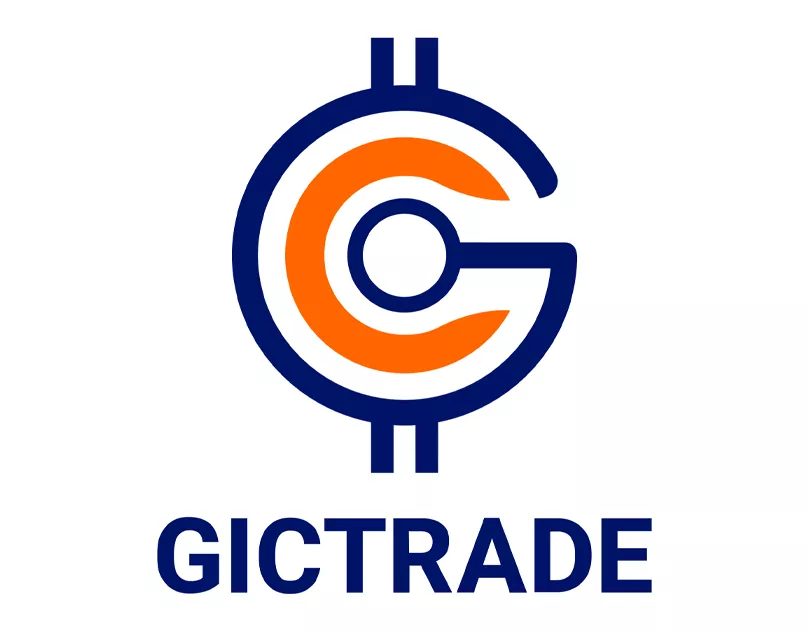How to Get Big Profits in Forex Trading - Welcome to this article that will reveal the secret of how to make big profits in forex trading. Forex trading is one of the promising forms of investment for many people. With a good understanding of the foreign exchange market and the right strategy, you can make significant profits.
In this article, we will discuss the steps you need to take to be successful in forex trading. We will share tips, tricks, and strategies that you can implement to increase your chances of success in forex trading. So, let's get started!
Table of Contents
- 1. What is Forex Trading?
- 2. Why is Forex Trading Promising?
- 3. Understanding Fundamental Analysis
- 4. Using Technical Analysis
- 5. Wise Risk Management
- 6. Practice with a Demo Account
- FAQ (Frequently Asked Questions)
- 1. Is forex trading risky?
- 2. Do I need a large capital to start forex trading?
- 3. How long does it take to become a successful forex trader?
- 4. Do I need to have a financial or economic background to trade forex?
- 5. How can I learn more about forex trading?
- 6. What should you do if you experience losses in forex trading?
- Conclusion

1. What is Forex Trading?
Before we discuss how to make big profits in forex trading, it is important to understand what forex trading is. Forex trading is the process of buying and selling currencies with the aim of making a profit from differences in exchange rates.
The foreign exchange (forex) market is the largest market in the world with daily trading volumes reaching trillions of dollars. Forex traders can take advantage of currency price fluctuations to make a profit.
2. Why is Forex Trading Promising?
Forex trading offers a variety of benefits to traders. Here are some reasons why forex trading is promising:
- High Liquidity: The forex market has a high level of liquidity, meaning you can easily buy and sell currencies at fair market prices.
- Huge Profit Potential: Significant currency price fluctuations open up opportunities to make huge profits in a short period of time.
- 24/5 Access: The forex market operates 24 hours a day, 5 days a week, giving traders time flexibility.
- Leverage: In forex trading, you can use leverage to increase your buying power and make bigger profits.
3. Understanding Fundamental Analysis
Fundamental analysis is an important method in forex trading. In fundamental analysis, economic factors and related news are studied to predict currency movements. A deep understanding of fundamental analysis will help you make better decisions in forex trading.
Fundamental Factors Analyzed
In fundamental analysis, there are several factors that must be analyzed in depth. Here are some fundamental factors that are often considered:
1. Interest Rate
Interest rates are one of the main factors in fundamental analysis. A country's interest rate can affect the value of its currency. For example, if interest rates increase, the country's currency tends to strengthen. Conversely, if interest rates decrease, the country's currency tends to weaken. Therefore, understanding the central bank's interest rate policy and the indicators related to it is very important in fundamental analysis.
2. Economic Growth
A country's economic growth is also an important fundamental factor. If a country's economic growth is strong, its currency tends to strengthen. Conversely, if economic growth is negative or slow, its currency tends to weaken. Data such as Gross Domestic Product (GDP), employment, investment, and other economic indicators are used to measure a country's economic growth.
3. Inflasi
Inflation is a general increase in the prices of goods and services. The level of inflation can affect the value of a currency. If inflation is high, the currency tends to weaken because people's purchasing power decreases. Conversely, if inflation is low, the currency tends to strengthen. Indicators such as the consumer price index (CPI) and producer price index (PPI) are used to measure the level of inflation.
4. Government Policy
Government policies, especially fiscal and monetary policies, can affect the value of a currency. Government actions such as public spending, tax policies, and inflation control policies can affect market sentiment towards a currency. Therefore, understanding government policies and related news is essential in fundamental analysis.
Sources of Information for Fundamental Analysis
To perform fundamental analysis, forex traders rely on various sources of information. Some commonly used sources of information include:
- Economic and political news: Through news media, such as newspapers, television, and news websites, traders can obtain information about economic and political events that may affect currency values.
- Economic reports: Economic reports such as corporate financial reports, unemployment data, and inflation figures are released regularly and can provide insight into a country's economic condition.
- Central bank officials' speeches and statements: Statements from central bank officials can provide clues about monetary policy and their outlook on the country's economy.
- Economic calendar: The economic calendar provides a schedule of economic report releases and other important events. Traders can use the economic calendar to organize their trading strategies based on scheduled events.
4. Using Technical Analysis
Technical analysis is another important method in forex trading. In technical analysis, historical data about currency price movements is used to identify patterns and trends that can provide clues about the direction of future price movements. By using technical analysis, traders can make trading decisions based on chart data and technical indicators.
Price Action Charts and Patterns
In technical analysis, price movement charts are the main tool used. The chart can be a bar chart, line chart, or Japanese candle chart. Through charts, traders can see price movement patterns that can provide clues about the direction of future price movements.
Some price movement patterns that are often observed in technical analysis include:
- Pattern support dan resistance: Support is a price level where strong demand prevents the price from falling further, while resistance is a price level where strong supply prevents the price from rising higher. Support and resistance patterns can be used to identify key levels where price may reverse direction.
- Candlestick patterns: Candlestick patterns are patterns formed by Japanese candlesticks on a chart. Patterns such as the doji pattern, hammer pattern, and engulfing pattern can provide signals about price reversals or trend continuations.
- Chart patterns: Chart patterns are patterns formed by certain lines or shapes on a chart. Examples include double tops, head and shoulders, and triangles. These patterns can provide clues about changes in price trends.
Technical Indicators
In addition to charts, traders also use technical indicators to gain additional information about price movements. Technical indicators calculate and display data based on mathematical calculations.
Some technical indicators that are often used in technical analysis include:
- Moving averages: Moving averages are indicators that calculate the average price over a certain period of time. They can help identify trends and provide signals about price reversals.
- Relative Strength Index (RSSI): RSI is an indicator that measures the strength and weakness of current prices. It is used to identify overbought and oversold conditions in the market.
- Osilator Stochastic: The stochastic oscillator is also used to measure the strength and weakness of prices. This indicator can help identify overbought and oversold conditions and provide signals about price reversals.
Technical Analysis in Practice
In using technical analysis, traders combine information from charts and technical indicators to make trading decisions. They look for relevant price movement patterns, significant support and resistance levels, and signals from technical indicators.
In addition, traders also use the concepts of risk management and money management in technical analysis. They determine stop loss and take profit levels based on technical analysis to control risk and manage profits.
5. Wise Risk Management
Smart risk management is the key to success in forex trading. It is important to set clear risk limits, such as stop losses and take profits, and limit the amount of capital invested in a single trade. By limiting your risk, you can protect your capital and avoid major losses.
Stock and Forex Trading with GICTrade, Minimize Trading Risks Without Hassle!

Improve your ability in income management by starting trading at GIC! Not only trading, you can also learn about the world of stocks and forex trading if you are a beginner in the world of trading.
GIC provides forex learning services for you to learn, either through educational videos via the GIC Youtube channel or learning about forex through the GIC journal that you can see directly on the website. Start registering now so you can start trading with GICTrade.
Recommended Articles :
|
List of Fraudulent Forex Brokers in Indonesia According to Regulators |
|
Complete Chart Patterns: Continuation, Reversal, to Bilateral |
6. Practice with a Demo Account
Before starting forex trading with real money, it is advisable to practice with a demo account. A demo account allows you to trade with virtual money without the risk of losing real money. This is a good way to test your trading strategies, hone your skills, and understand the dynamics of the market before diving into real forex trading.
FAQ (Frequently Asked Questions)
1. Is forex trading risky?
Yes, forex trading involves risks. Currency price fluctuations can result in losses. It is important to have a good understanding of the risks involved and to use appropriate risk management strategies.
2. Do I need a large capital to start forex trading?
You can start forex trading with a small capital. Many forex brokers offer accounts with affordable minimum deposits.
3. How long does it take to become a successful forex trader?
The time it takes to become a successful forex trader varies from person to person. It takes time, practice, and experience to develop the skills necessary to succeed in forex trading.
4. Do I need to have a financial or economic background to trade forex?
No, you don’t need to have a financial or economic background to trade forex. However, a good understanding of the basic concepts and strategies of forex trading will help you become more successful.
5. How can I learn more about forex trading?
There are many learning resources available online, including free books, courses, and tutorials. You can also join a forex trader community to share knowledge and experiences.
6. What should you do if you experience losses in forex trading?
If you experience a loss in forex trading, it is important to stay calm and follow your risk management plan. Evaluate your trades, learn from your mistakes, and continue to learn and grow as a trader.
Recommended Articles :
|
BCA Credit Card Interest: Types, Calculation Methods, and Fees |
| Sure You Know? The Hidden Secret Behind Forex Trading |
Conclusion
In this article, we have discussed how to make big profits in forex trading. By understanding the basic concepts of forex trading, applying fundamental and technical analysis, and managing risk wisely, you can increase your chances of success in forex trading. Remember to always keep learning, practicing, and developing your skills as a trader. Good luck on your forex trading journey!
Source :
- Forex Trading Basics
Investopedia. (2021). Currency Trading for Dummies. Link
Financial Services Authority. (2021). Getting to Know Foreign Exchange (Forex) Trading. Link
- Effective Forex Trading Strategies
DailyFX. (2021). Top 3 Forex Strategies for Beginner Traders. Link
Forex Indonesia. (2021). 10 Most Popular Forex Trading Strategies. Link
- Technical and Fundamental Analysis
BabyPips. (2021). Complete Guide to Technical Analysis for Forex Traders. Link
My Forex Indonesia. (2021). What is Fundamental Analysis? Link
- Risk Management in Forex Trading
FXCM. (2021). Risk Management in Forex Trading. Link
About Forex. (2021). 5 Risk Management Tips in Forex Trading. Link
- Trading Psychology and Emotions
Learn Forex. (2021). Trading Psychology: Overcoming Emotions in Forex Trading. Link
Indonesian Forex. (2021). Controlling Emotions in Forex Trading. Link
 Last:
Last: 






